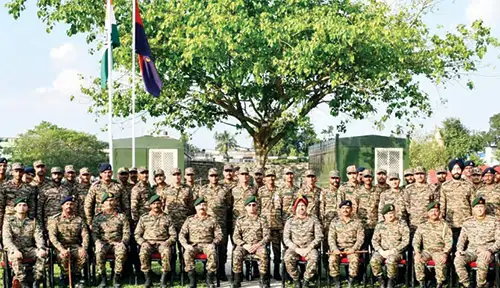Blitz Bureau
NEW DELHI: Three new fully operational military garrisons along the Indo-Bangladesh border, at Bamuni (near Dhubri), Kishanganj, and Chopra, has been set up to secure the strategic Siliguri Corridor, commonly known as the “Chicken’s Neck”.
The Siliguri Corridor, a 22-kilometre-wide strip in North Bengal, connects the rest of India with its seven northeastern states and lies sandwiched between Nepal, Bhutan, Bangladesh, and China. The development comes amid reports of increased engagement between Bangladesh’s interim Chief Adviser Muhammad Yunus and Pakistan’s military establishment, including a recent meeting with Pakistan’s Joint Chiefs of Staff Chairman General Sahir Shamshad Mirza, reportedly to discuss connectivity and defence cooperation.
Intelligence assessments describe this as part of a strategic attempt to “reshape the power balance” in the eastern neighbourhood, potentially affecting the security of the Siliguri Corridor.
However, senior Indian military officials have emphasised that the region is India’s “strongest defence corridor.” “The Siliguri corridor is under multi-layered security cover. The new garrisons will enhance our quick mobility, logistics, and real-time intelligence integration,” an Army source said.
Recently, the Army Chief Upendra Dwivedi had remarked, “As far as the Chicken’s Neck is concerned, I see it from a different perspective. It is our strongest region because our entire force deployed in West Bengal, Sikkim and the Northeast can be mobilised there together.”
The Trishakti Corps (33 Corps), headquartered at Sukna near Siliguri, oversees the corridor’s defence. The formation routinely conducts combat and live-fire exercises, including with T-90 tanks, to maintain readiness in high-altitude and riverine terrain. The corridor’s aerial security is bolstered by the Rafale fighter jets deployed at the Hashimara Airbase in West Bengal, alongside MiG variants and a BrahMos missile regiment, ensuring both offensive and deterrence capability.
































